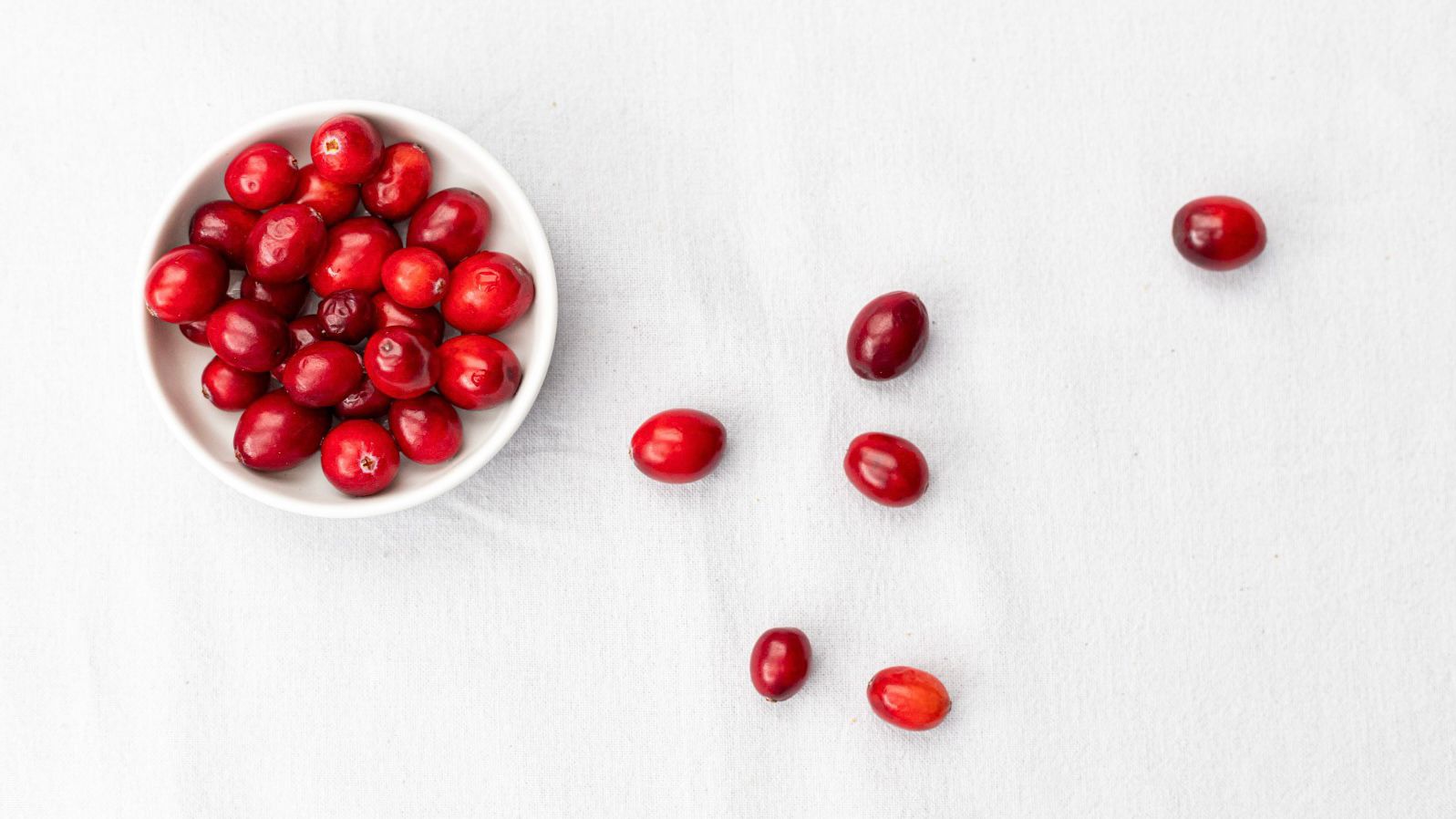
10 Tips for Growing Cranberries at Home
Cranberries are a unique and versatile fruit that can be grown at home with a little patience and the right knowledge. These 10 tips will help you successfully grow your own cranberries and enjoy the many benefits of this delicious fruit.
Tip #1: Choose the Right Variety
When growing cranberries at home, it is important to choose a variety that is well-suited to your climate and soil conditions. Some popular varieties include Early Black, Ben Lear, and Stevens. These varieties are known for their hardiness and ability to thrive in a variety of conditions. It’s also important to research the size and growth habit of the variety you choose, as some varieties can be more vigorous or less vigorous than others. This will help you to better plan for the space and support that the plants will need.
It’s also a good idea to buy cranberry plants from a reputable nursery or supplier to ensure that you’re getting healthy plants that are well-suited to your area. Before you plant, make sure to check that the plants are free of pests and diseases, and have a good root system. This will give your cranberries the best chance for success.
Tip #2: Prepare the Soil
Cranberries prefer acidic soil with a pH between 4.5 and 5.5. To prepare your soil, add peat moss or sulfur to lower the pH, and make sure the soil is well-draining. Cranberries are also sensitive to excess moisture, so make sure to plant them in a location that receives good drainage.
A raised bed is a great option for growing cranberries as it provides good drainage and allows you to control the soil conditions more easily. When building your raised bed, make sure to use untreated wood, and fill it with a mixture of soil, peat moss, and sand. This will help to create the perfect growing conditions for your cranberries.
It’s also worth noting that cranberries are a bog plant and can be grown in a waterlogged soil, which can be a great option if you live in an area with high water table or heavy rainfall. If you choose to grow cranberries in this way, make sure to use a container or a pond liner to contain the water and prevent it from seeping away.
Tip #3: Provide Support
Cranberries are a trailing vine, and will need support to climb. Use a trellis, wire or string to provide support for your cranberry plants. This will help them to grow vertically and increase their fruit production.
When providing support for your cranberries, make sure to use a material that is strong enough to hold the weight of the plants and the fruit. A wire mesh or string trellis is a good option as it allows the plants to climb and provides a good amount of support. Make sure to tie the plants to the trellis as they grow, and train them to grow in the desired direction. This will help to keep the plants neat and tidy, and make them easier to manage.
Tip #4: Watering and Mulching
Cranberries require consistent moisture, so make sure to water them regularly, especially during dry spells. A layer of mulch around the base of the plants will help to retain moisture and keep the soil cool. When watering your cranberries, make sure to provide a deep and thorough watering, rather than frequent shallow watering.
This will help the plants to develop a strong and deep root system. A layer of mulch, such as pine needles or bark, around the base of the plants will help to retain moisture and keep the soil cool. This will also help to suppress weeds, and keep the fruit clean and free from soil-borne pathogens.
It’s important to note that cranberries are sensitive to excess moisture and can be prone to root rot if the soil stays too wet for too long. Make sure to monitor the soil moisture levels and adjust your watering schedule accordingly.
Tip #5: Fertilization
Cranberries require very little fertilizer, but a small amount of nitrogen will help to promote growth. Use a balanced fertilizer, and apply it in the spring, when the plants are first starting to grow. It’s important to avoid over-fertilizing your cranberries, as this can lead to excessive leaf growth at the expense of fruit production.
A balanced fertilizer that contains equal parts of nitrogen, phosphorus, and potassium is a good option. It’s also worth noting that cranberries are a slow-growing plant and may not need to be fertilized every year. You can monitor the plants’ growth and adjust your fertilization schedule accordingly.
Tip #6: Prune and Train
Prune and train your cranberry plants to encourage bushier growth and more fruit. Remove dead or diseased branches, and train the remaining branches to grow in a certain direction. This will help to increase fruit production and make the plants more manageable.
It’s important to prune your cranberries regularly to remove any dead or diseased wood, and to shape the plants to encourage bushier growth. This will help to promote fruit production and make the plants more manageable. It’s also worth noting that cranberries are a perennial plant and will need to be pruned every year. A good rule of thumb is to prune the plants in late winter or early spring before new growth begins.
Tip #7: Watch for Pests and Diseases
Cranberries are relatively resistant to pests and diseases, but it is important to watch for signs of trouble. Keep an eye out for signs of disease, such as leaf spot or powdery mildew, and take action immediately if you notice any issues.
It’s important to monitor your cranberries regularly for any signs of pests or diseases, and to take action immediately if you notice any issues. Common pests that can affect cranberries include aphids, scale insects, and cranberry fruitworm. It’s also worth noting that cranberries are sensitive to herbicides, and any chemicals used to control pests or diseases should be applied according to the manufacturer’s instructions.
Tip #8: Harvesting Cranberries
Cranberries are typically ready to harvest in the fall, when they turn a deep red color. Use scissors or shears to cut the berries from the vine, and be sure to leave a few inches of stem attached to each berry. It’s important to harvest your cranberries when they are fully ripe, as under-ripe or over-ripe berries will not store well.
A good rule of thumb is to wait until the berries turn a deep red color and are easily detached from the vine. When harvesting, use scissors or shears to cut the berries from the vine, and be sure to leave a few inches of stem attached to each berry. This will help to protect the berries during storage and transport.
Tip #9: Using Cranberries
Cranberries are a versatile fruit that can be used in a variety of dishes. They are often used in jams, jellies, and pies, but can also be used in savory dishes, such as sauces for poultry or pork. Cranberries are also rich in antioxidants and Vitamin C, making them a healthy addition to any diet.
Fresh cranberries have a tart and tangy flavor that is perfect for adding to sweet and savory dishes. They can be used to make jams, jellies, and pies, or added to pancakes, waffles, and muffins for a burst of flavor. Cranberries can also be used to make a delicious sauce for poultry, pork, or venison.
Cranberries are also a healthy addition to any diet. They are rich in antioxidants and Vitamin C, which can help to boost the immune system, and lower the risk of heart disease and cancer. Cranberries are also low in calories and high in fiber, making them a great choice for anyone looking to maintain a healthy weight.
Tip #10: Storing Cranberries
Once harvested, cranberries can be stored for several months in the refrigerator or freezer. They can be stored in a plastic bag or airtight container, and will keep for up to 4 months in the refrigerator and for up to 12 months in the freezer. It’s important to handle cranberries with care, as they are delicate and can be easily bruised.
Make sure to remove any damaged or overripe berries before storing, and to keep them away from other fruits and vegetables, which can give off ethylene gas and cause the cranberries to spoil faster. Once you’ve stored your cranberries, you can use them throughout the year to make jams, jellies, sauces, and more. With a little bit of planning and care, you can enjoy the delicious and healthy benefits of this unique and versatile fruit all year long.
If you are interested in growing other fruits, check out these other articles: How to grow raspberries, How to grow dates, How to grow mango, How to grow pomegranate, How to grow pomelo, How to grow kiwi, How to grow strawberry, How to grow currants, How to grow khaki, How to grow currants, How to grow bananas, How to grow citrus, How to grow blueberries, How to grow blackberries, How to grow pineapples, How to grow lemons,












